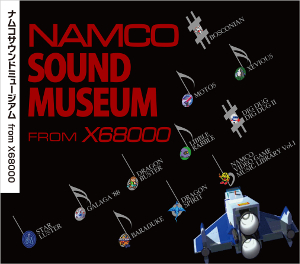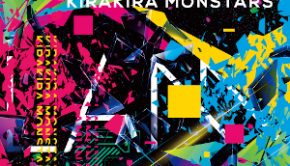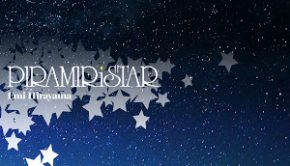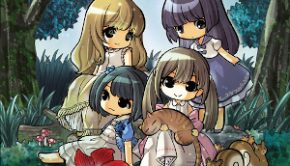NAMCO SOUND MUSEUM FROM X68000
 |
Album Title: NAMCO SOUND MUSEUM FROM X68000 |
| Record Label: Sweep Record |
|
| Catalog No.: SRIN-1168 |
|
| Release Date: February 22, 2018 |
|
| Purchase: Buy at CDJapan |
Overview
Supersweep’s latest compilation release is NAMCO SOUND MUSEUM FROM X68000, featuring music from a variety of games, releasd on the Sharp Corporations X68000 home computer. Composed by a variety of, at the time, Namco employees, and featuring music from games such as Bosconian, Dig Dug, Xevious, and Pac-Man, among others, is this all-encompassing compilation release that captures an early look at game composition. sound
Body
Disc 1
The first disc features music and sound effects from three games, Bosconian, Star Luster, and Galaga ’88. Of these releases, Bosconian certainly has the most meaty soundtrack, despite its relative length. The “Title Menu” is rather funk while it’s various other themes run the gamut of sounds. “Little Wave” is an extremely catchy tune with a space sound and an excellent melody that definitely serves as a highlight. “Red Alert” is tense and mysterious with some great synth work and a punchy sound. “Blast Power” is funky with plenty of slap bass and features a smooth melody that manages to stand out. “Flash Flash Flash” is another super engaging tune with a vibrant melody, wonderful solos, and is certainly the most substantial tune from the game. Lastly, “Excellence is an upbeat tune with a celebratory sound that closes off the game’s soundtrack nicely.
The next game featured is Star Luster, a soundtrack with many short ditties and most of which feature a more minimalist approach, which makes sense given that Hiroyuki Kawada was responsible for most of the soundtrack. “Dark Planet BGM” is repetitive and ominous. It’s other renditions, such as the “GS Arrange version” is more orchestral in sound which helps strengthen the tune a bit while the “Arrange Version” is a bit more engaging and features a blend of orchestral chiptune sound fonts and more 8-bit renditions as well. There is also a “CM64” version, standing for Commodore 64, that is present that mirrors the “GS Arrange” in terms of approach. The overall soundtrack, however, is rather lackluster.
Galaga ’88 is also a meatier release. “Loading BGM” is space-like in sound and has a dreamy quality to the iconic Galaga melody and features a medley like approach to its music. There are also a variety of “Galactic Dancing” tunes present. These include a “Waltz,” “Tango,” “Salsa,” and “Big Band Jazz” versions. All of which are generally enjoyable short tunes, but definitely sound like a typically generic tune mirroring those styles. There are also “Galactic Dancing” renditions of other Namco games. “Xevious” is a march-like rendition of the classic Xevious tune and has a dreamy quality to it. “Gaplus” is dark, intense, and sinister, while “Rally-X,” on the other hand, is upbeat and jovial. “Pac-Man” shares a dreamy quality to it while “Dig Dug” is an upbeat march. Lastly, the “Mappy” version is funky and incorporates bird sound effects. The “Arrange Mode Ending Music” incorporates game sound effects and takes the main theme of the game and turns it into an upbeat, space-y, and militaristic tune.
Disc 2
The entirety of the second disc belongs to Motos. The “In Game Music” is frenetic, matching the action on the screen, although isn’t super complex. On the other side, “Name Entry” is engaging and celebratory in sound. “Attract Sound (Arrange Version)” is militaristic and spacey in nature with a decent melody while “Theme of Motos” is a different take on “In Game Music” that benefits from a slightly different sound programming while “Ranking” is an updated “Name Entry” that benefits for the same reason as “Theme of Motos.” In addition to these themes, there are some other meaty tracks, of varying quality. “Black Vinegar” is an ominous and dark tune, albeit cliche, while “Girl Force” is mysterious and repetitive, making it more of a chore to listen to. “Lione -Lu-” features a more industrial sound and a tense atmosphere while “Motos Giant” keeps a tense sound but also provides an airiness to it with its slick and upbeat melody. “Bow of Truth” has more orchestral tendencies peppered with hints of prog rock while “Religion -Axe-” is frenetic with plenty of bass, but in the end, is a bit mediocre. Lastly, “Wall of Valkyurie” is upbeat and vibrant with its catchy melody, making for one of the more memorable tunes. In addition, there are also MT-32 renditions of the music, all of which use the Roland MT-32 synthesizer.
Disc 3
Both this disc and the following disc are featured from the music disk NAMCO VIDEO GAME MUSIC LIBRARY Vol.1 and not from the ported versions on the X68000. However, these are the first time these tunes have been released on CD. The third disc features a variety of games on it, including Bomb Bee, Cutie Q, Galaxian, Galaga, Gaplus, Bosconian, Pac-Man, Super Pac-Man, Pac & Pal, The Tower of Druaga, Dragon Buster, Dig Dug, Dig Dug II, and Pole Position I&II. Both Bomb Bee, Galaxian, and Bosconian are just a series of sound effects with very little actual music. Cutie Q also features sound effects, but there is also a tune called “Pinball Blues,” that, as the name might suggest, is bluesy in nature and is a decent track overall.
As with most of the games on this disc, a majority of them are a series of short ditties but each game does have a few more substantial tunes. Galaga‘s “Name Input Music” is a playful, simplistic tune with a catchy melody while “Galaga Fanfare” is a march-like rendition of the main Galaga theme. Gaplus is primarily short ditties but does have a militaristic and fanfare-ish rendition of the main theme of the game that is exuberant at times. Pac-Man is primarily sound effects, but the arranged tune “Pac-Man A Go Go” takes the iconic music from the game and turns it into a bright, exuberant, and fun piece that is a bit meatier. Super Pac-Man, on the other hand, is more sound effects and short ditties that are rather repetitive. Pac & Pal‘s “Main BGM” is bright and playful and sports a decent melody while “Dream of Pac & Pal” is a dreamy and beautiful take on said music.
The music in The Tower of Druaga offers a variety of different soundscapes in their short length. “BGM” is an upbeat heroic tune done in the style of a fanfare while the tunes “Succubus Appearance BGM,” “Dragon Appearance BGM,” and “Druaga Appearance BGM,” offer a magical, ominous, and tense sound, respectively, but all suffer from repetition. The “Congratulations Message Music” is upbeat in nature with a nice melody and a classical sound to it. Lastly, “Theme of Druaga” is an arrange version of “BGM,” sporting a regal and militaristic sound. A majority of the music in Dragon Buster features the same motif, but provides a different atmosphere for each one. “Rocky Mountain BGM” is quirky in approach while “Renga BGM” is more aquatic in sound. “Catacombs BGM” has a hollow ring to it while “Limestone Cave BGM” takes a similar approach to “Rocky Mountain BGM.” “Room Guard Battle” is tense, but doesn’t develop, while “Love Scene with Princess” has a dreamy pop quality to it. “Orgel of Legends” takes the same motif heard in most of the BGM and gives it a whimsical and magical touch.
Dig Dug and Dig Dug II both offer a few notable tunes, in addition to sound effects. The former’s “Dig Dug Walk Music” is fast paced and bright, although a bit repetitive. The same goes for “Name Input Music.” The arranged tune, “Dig Dug Walk” is playful and upbeat and sports a marching tone. The latter’s “BGM” is upbeat and bright with a catchy melody while “Spurt BGM” is more frenetic and has a sense of urgency. “An Easy Etude of Dig Dug II” takes the “BGM” tune and turns it into a more classical style approach. Lastly, the music for Pole Position and Pole Position II features many short ditties, an upbeat and celebratory “First Place Name Input Music,” and an arranged tune, “Pole to Win,” a tune that sports a great melody, fanfares, and march-like aspects.
Disc 4
Like the third disc, this disc also features soundtracks to a variety of games, including Xevious, Grobda, Tank Battalion, Rally-X, New Rally-X, Mappy, King & Balloon, Warp & Warp, Libble Rabble, Phozon, Metro-Cross, Baraduke, Motos, and Sky Kid. Entries like Tank Battalion, King & Balloon, and Warp & Warp offer short ditties, but primarily just showcase the sound effects. Xevious and Grobda, both related, feature some original music and a single arrange, mirroring the approach of the third disc. The former’s “BGM” is the iconic tune most recognizable from the game. It’s a short tune, but a solid one. Similarly, “1st Place Name Input Music” and “2nd-5th Place Name Input Music” both feature upbeat tunes, with the former being one of the other recognizable tunes from the soundtrack. The arrange tune, “Xevi Do Basic” is funky, upbeat, and transforms “BGM” into a fanfare tune with a lot of staying power. The latter features more ditties but its “Name Input Music” is upbeat, bright, and celebratory and incorporates the main BGM from Xevious. The “Grobda Military March” is a fun march take on the “Name Input Music” from Grobda.
Rally-X and New Rally-X are vastly different in approach. The former is comprised mostly of sound effects and short ditties, with the “Car Running Sound” being its most substantial tune, but rather repetitive and lackluster. The latter, on the other hand, offers more meat to the soundtrack and certainly more variety as well. “BGM1,” “BGM2,” and “BGM3” are all short, but boast decent melodies with each taking on a different atmosphere, such as playful, groovy, and jazzy, respectively. “New Rally Beat” is the arrange version with an engaging sense of speed and a fun take on “BGM3.” Mappy‘s “Main BGM” has a classic cartoon type of sound with a great melody and a jazzy approach while “Bonus Round BGM,” after a few short ditties, is upbeat with a fun melody. “Basic Mappy,” the arrange tune, has a carnival-esque sound and makes for a jazzy and groovy listen, enhancing the style found in “Main BGM.” Upbeat and fun is the “BGM” to Libble Rabble while it’s “Over Charge BGM” has an exotic and more subdued sound to it. The arranged tune, “Libble Rabble Carnival” is upbeat and playful and sports a bit of a tropical vibe to it. Sadly, the music to Phozon is comprised mostly of sound effects and ditties with both name entry tunes sporting space-y vibes but aren’t particularly special in their own right.
Metro-Cross’ “Main BGM” is swinging and enjoyable, even if the sound is a more generic swing sound overall while the arrange tune, “Metro Blue” is bluesy, sultry, and mysterious rendition of the “Main BGM” that sandwiches the sound effects and short ditties in between. Baraduke‘s more notable tunes are “Name Entry Music,” with its mysteriuos and ominous sound, a bit uncommon for the type of tune it is, while “Ending” is celebratory and joyous in nature. The “Baraduke Finale” takes “Ending” and brings with it better sound programming and gives it a march-like atmosphere. “BGM” is a tense tune from Motos, although it isn’t particularly remarkable, while “Name Input Music” gives off a sense of closure with its celebratory sound. The arrange tune, “Motos Space” takes “BGM” and transforms it into something darker and more textural. It’s quite a nice rendition. Lastly, Sky Kid‘s more substantial tunes “Main BGM,” with its bright and upbeat carnival-esque sound provide a nice soundscape that is carried over into the arrange version, “Sky Kid March,” adding a playfulness to the mix.
Disc 5
The components of the fifth disc can be heard elsewhere on the album. These soundtracks include Xevious (x68k), Dragon Buster (x68k), Libble Rabble, Dig Dug, Dig Dug II, and Baraduke. The difference between the tunes featured on this disc versus the other discs on the soundtrack is that the sound programming is different, bringing with it a slightly different approach, with the music essentially being more similar than different.
Disc 6
The compilation closes with by far the most substantial portion of the release, Shinji Hosoe’s Dragon Spirit. For the most part, Shinji Hosoe stayed true to the classic shooting sound throughout the stage themes in order to stimulate players. “Area 1,” representing the Valley of the Spirits, is one of the definitive tunes on the soundtrack and has been remixed aplenty since the game’s release. It features a very energetic and adventurous tone that signifies the start of the journey. In addition, the melody is extremely catchy and the rhythms incorporated give off a feeling of exhilaration and tension. There is also a long version of this particular track featured as a bonus towards the end of the disc.
There’s plenty of diversity in the stylings as players proceed through the different areas. “Area 2,” the music for the volcano stage, gives off a very heroic vibe and a rocking melody. I love the combination of intense percussion with the fantastic melody and the solo is absolutely amazing and one of the highlights of the track. It definitely seems to have been written in the spirit of Gradius’ classic shooters. The music for jungle stage has a less energetic tempo, but boasts a lot of atmosphere. Hosoe really brings out nuances from the arcade sound board and the pop/rock sound makes the melody stand out. The theme for the desert stage meanwhile is much darker in tone, featuring extensive percussion work and an ominous melody. Still, he keeps that rock flavor alive. It isn’t the strongest of the stage themes, but it definitely works in context.
The themes for the cave stage and ocean floor are considerably shorter than most others on the soundtrack, but nevertheless delight during their playtime. The former is one of the quirkiest thanks to its odd rhythms and spacey melody, while the latter features a bubbly sound through its xylophone and synthesizer tones. “Area 6” is a return to the more heroic sounding tunes, representing the glacier stage of the game. The crystalline chiptunes combined with the more intense accompaniment really works and the contrast between the two is quite nicely. In addition, the synthesizer melody gives off a nice progressive rock sound with plenty of keyboard runs. The music for the deep sea trench stage is extremely ominous in tone, as the depths of the ocean are represented quite nicely. The melody may not be the focal point of the composition, but the tension heard in the theme is astounding and it helps represent the journey is coming closer to an end as well.
The music for the last stage, the Temple of Evil, is broken down into three different sections. The first, “Area 9-1,” focuses on intense percussion, sinister synthesizer tones, and a mysterious atmosphere as you journey ever closer to the final confrontation. “Area 9-2” focuses on quirky synthesizer and ominous percussion and is much tenser than its former stage, bordering on chaotic. Lastly, “Area 9-3” also features ominous percussion, but the melody is a bit mysterious and contemplative. The three area themes, while all different, share common elements and really sum up the final stage quite nicely.
For these area themes, there are four different boss themes featured, all of which work wonderfully in the game. The first focuses on intense percussion to describe the heat of battle. It doesn’t feature that much of a melody compared to the rest of the soundtrack. But for the idea of a battle, it works. “Boss B” and “Boss C” are more melodically-oriented pieces of music, featuring exhilarating, heroic melody lines. “Boss D” is definitely the strongest of the boss themes. It features an extremely catchy melody that gives off that sense of determination, some ominous tones, and a great rock vibe. “Final Boss” is short, but energetic, and gives off the sense of determination as well, but it isn’t as melodically developed as some of the other boss themes in the game.”Ending” is a very beautiful theme that gives off a great sense of accomplishment. It features a very soft, yet heroic, soundscape and closes the game up quite well. It’s always nice to hear the softer side of Hosoe and this is one of his greatest early examples.
Summary
The NAMCO SOUND MUSEUM FROM X68000 is a massive compilation of music and sound effects from games that were ported to the X68000 computer system. While many of the tunes are short in length, the tunes that provide a more substantial look into the music, such as those from Bosconian, Dragon Spirit, and Motos, as examples, make the album worth it for fans of early arcade style soundtracks. Granted, not all of it is amazing, but there are some strong standouts on the list. It’s not an essential purchase, but certainly a nice record of music history that showcases how music for games has evolved over time.
Do you agree with the review and score? Let us know in the comments below!
3.5
Posted on April 20, 2018 by Don Kotowski. Last modified on April 20, 2018.














